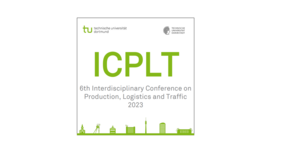Efficiency in logistics facilities (ELA) - Subproject: Optimal resource planning in multi-user distribution centers
- Transport Modelling and Process Planning
- Mathematical Optimization
Optimal resource planning in multi-user distribution centers
Background
The Kuehne + Nagel (AG & Co.) KG operates a multi-user distribution center at the "Logport" in Duisburg. For this kind of logistics facility (Location, which provides logistics services for various customers), two objectives were investigated in a joint research project. The first objective focused on the field of resource management: For the use of the resource "staff" (and associated technical resources), for which there are very heterogeneous and complex requirements, efficient models and methods of mathematical optimization were developed. The second objective was to develop a tool that supports the selection of appropriate products and customers for possible integration into the multi-user distribution center. The project was part of the work from the research project “Efficiency in Logistics Facilities” within the research project “EffizienzCluster LogistikRuhr”, funded by the German Federal Ministry for Science and Education (BMBF). Grant-ID: 01IC10L26A
Procedure
The first phase of the project involved a detailed analysis of the given logistics system, e.g. relevant processes, layouts, resources, planning requirements, and the IT environment as well as a requirements analysis for the two objectives. The result of this first phase was an extensive and formal system description, which was the basis for all further research activities. For the staff resource optimization the following steps were carried out: Firstly, optimization models and algorithms which had to comply with all relevant requirements from operational practice were developed and implemented using C#. Secondly, tests were performed based on different real world data, which were provided by the Kuehne + Nagel company via previously defined data interfaces.
For the project’s second objective, logistically relevant criteria were identified and classified into three main groups: infrastructural compatibility, product compatibility and storage techniques compatibility. Based on these three groups, matrices were created using a scoring system, to identify suitable, less suitable or unsuitable products. Furthermore, a static approach for a capacity balance was developed. For the application, all components were implemented into an Excel-based tool in order to identify suitable products and/or customers within the given multi-user distribution center.
Targeted results
The central result of the resource management is an efficient algorithm for the optimization of workforce planning in multi-user distribution centers, which was constructed in a way that allows the integration into an existing IT environment and thus assists dispatchers actively in their daily work. For the product and customer selection, the research result is an independent tool that provides proposals for suitable products and rates their suitability for the existing distribution center. Thus, the tool represents decision support for the company.
Contact: Prof. Dr.-Ing. Uwe Clausen
Funding and partners






